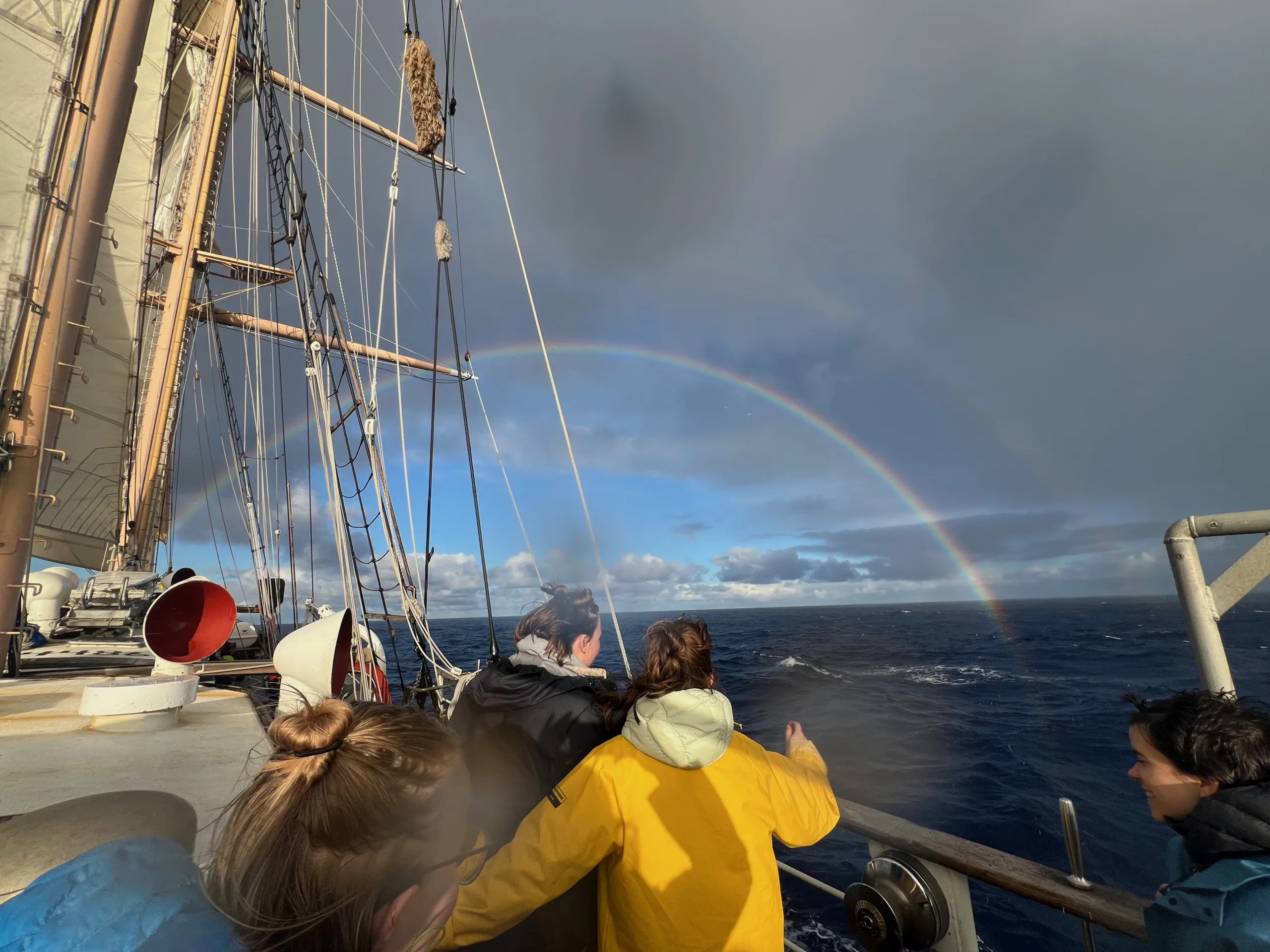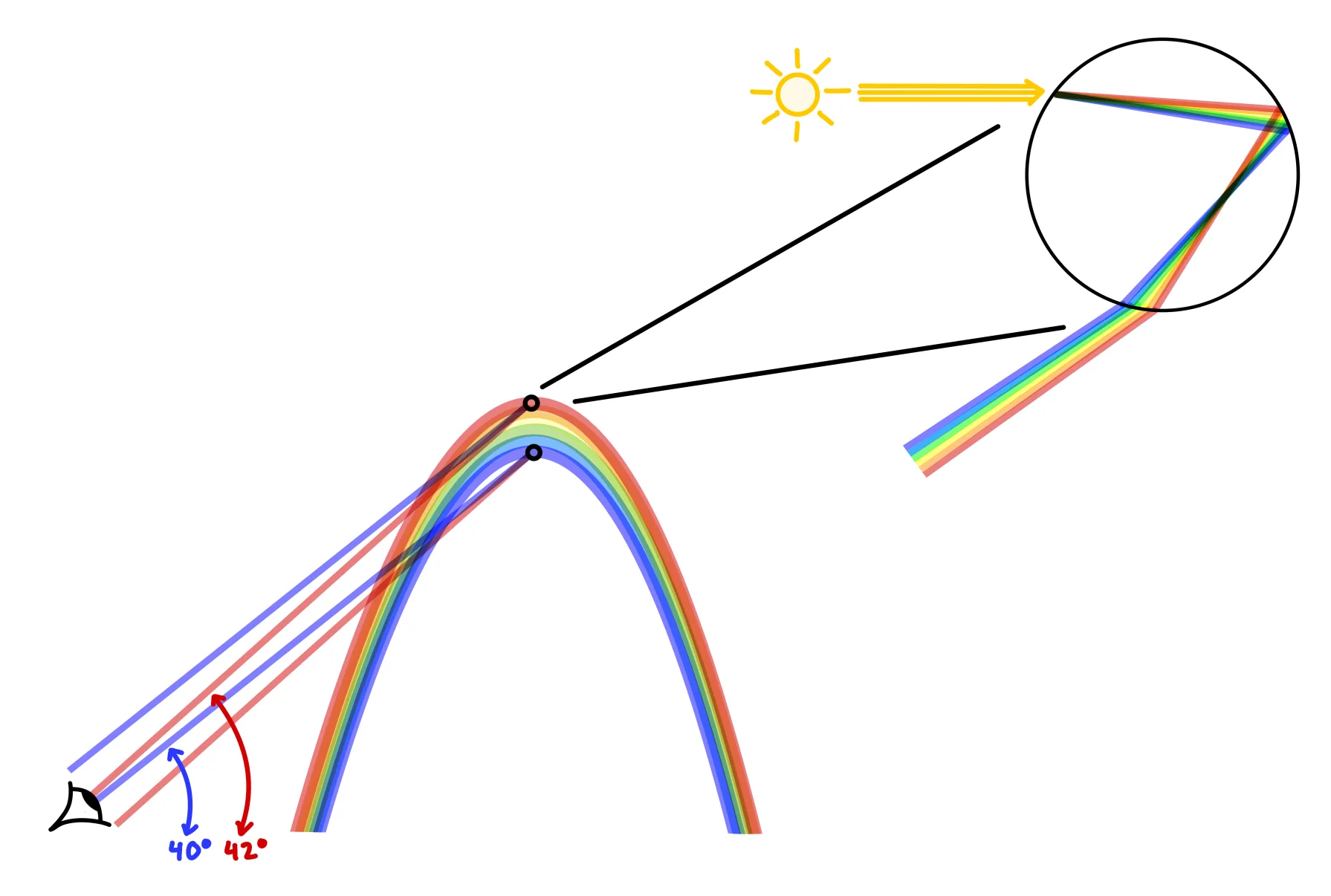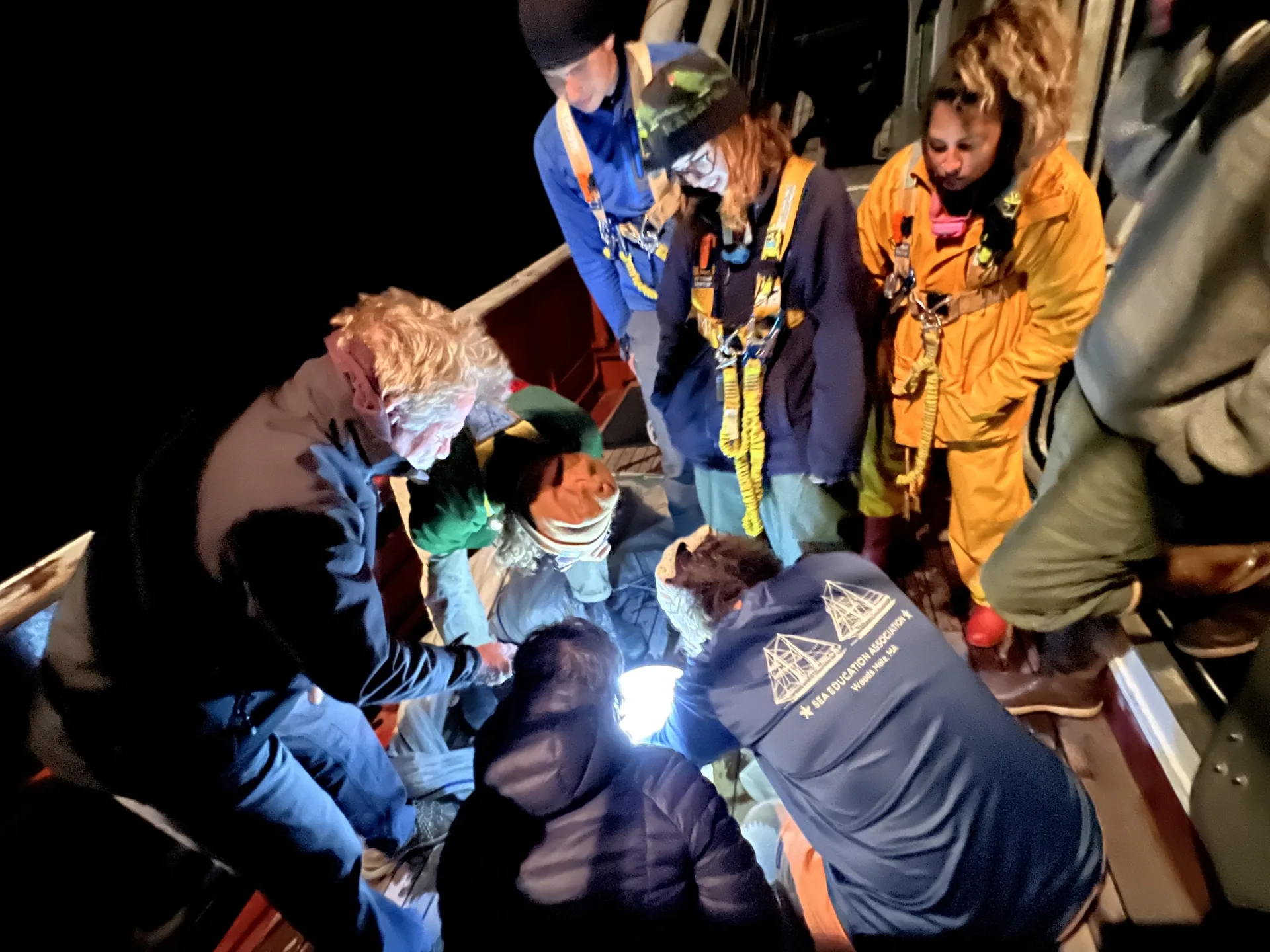Programs Blog
Rain, Rain, Go Away…

Date: April 24, 2025
Time: 1700
Location: Southern South Pacific Gyre (SSPG) 32˚ 29’ S x 153˚ 35’ W
Weather: Windy (SxE, Beaufort Force 5), 19.5˚ C
The front is approaching. Luckily, it’s nothing we haven’t seen before.
Jaimie here, reporting from the SSPG. We are currently sailing through a developing storm front, which has caused us to change our sail plans to avoid the worst of it. Based on a few different weather forecasts, our captain, Rick, was able to predict exactly how this would play out a few days ago. We saw intensifying, northerly winds yesterday, which dropped out when we reached the center of the storm front today. As we continue through the front, the winds are shifting to colder, southerly winds.
Since we got underway almost 3 weeks ago, we’ve experienced quite a bit of sporty weather. The first week was very rough, but it’s prepared us well to get through the storm now and to enjoy calmer weather when we do get it. And, as we all know:
“Only a rainbow, after rain.” – Andy Grammer
Since we’ve seen so many squalls, we’ve also seen so many rainbows. There’s really nothing out here to interrupt, so the rainbows can span the entire sky.
Have you ever wondered how rainbows are formed? This meteorological phenomenon occurs when the sun shines from behind you onto fine water droplets ahead of you at a specific angle. As white sunlight enters each water droplet, the beam of light is reflected at varying angles, depending on the wavelength of light. This ultimately results in red light, which has the longest wavelength of visible light, being reflected back at 42 degrees, and violet, which has the shortest wavelength of visible light, being reflected back at 40 degrees. The other wavelengths of visible light are reflected at angles between 40 and 42 degrees, allowing you to see the full spectrum of colors. A double rainbow is formed from secondary reflections within the raindrops, which requires bright sunlight to be visible.
Before this week’s storm came rolling in, we were really settling into more of a routine aboard. We’ve learned so much about what needs to happen both on deck and in the lab. We have now entered “Phase 2” where the students take on more responsibility for ship operations during our watches. With calmer weather last week, we were able to do a lot more science deployments and have found so many interesting creatures in our nets. I’m looking forward to more deployments once this storm passes.


Recent Posts from the Ships
- Ocean Classroom 2024-A collaborative high school program with Proctor Academy
- Collaborations and Long-term Commitments: SEA’s Caribbean Reef Program Sets a Course for Coastal Programs that Compliment Shipboard Experiences.
- Sea Education Association students prepare for life underway using state of the art nautical simulation from Wartsila Corporation.
- SEA Writer 2022, Magazines From the Summer SEA Quest Students
- Technology@SEA: Upgrades Allow Insight into Ocean Depths
Programs
- Gap Year
- Ocean Exploration
- High School
- Science at SEA
- SEA Expedition
- SEAScape
- Pre-College
- Proctor Ocean Classroom
- Protecting the Phoenix Islands
- SPICE
- Stanford@SEA
- Undergraduate
- Climate and Society
- Climate Change and Coastal Resilience
- Coral Reef Conservation
- Marine Biodiversity and Conservation
- MBL
- Ocean Exploration: Plastics
- Ocean Policy: Marine Protected Areas
- Oceans and Climate
- Pacific Reef Expedition
- The Global Ocean: Hawai'i
- The Global Ocean: New Zealand